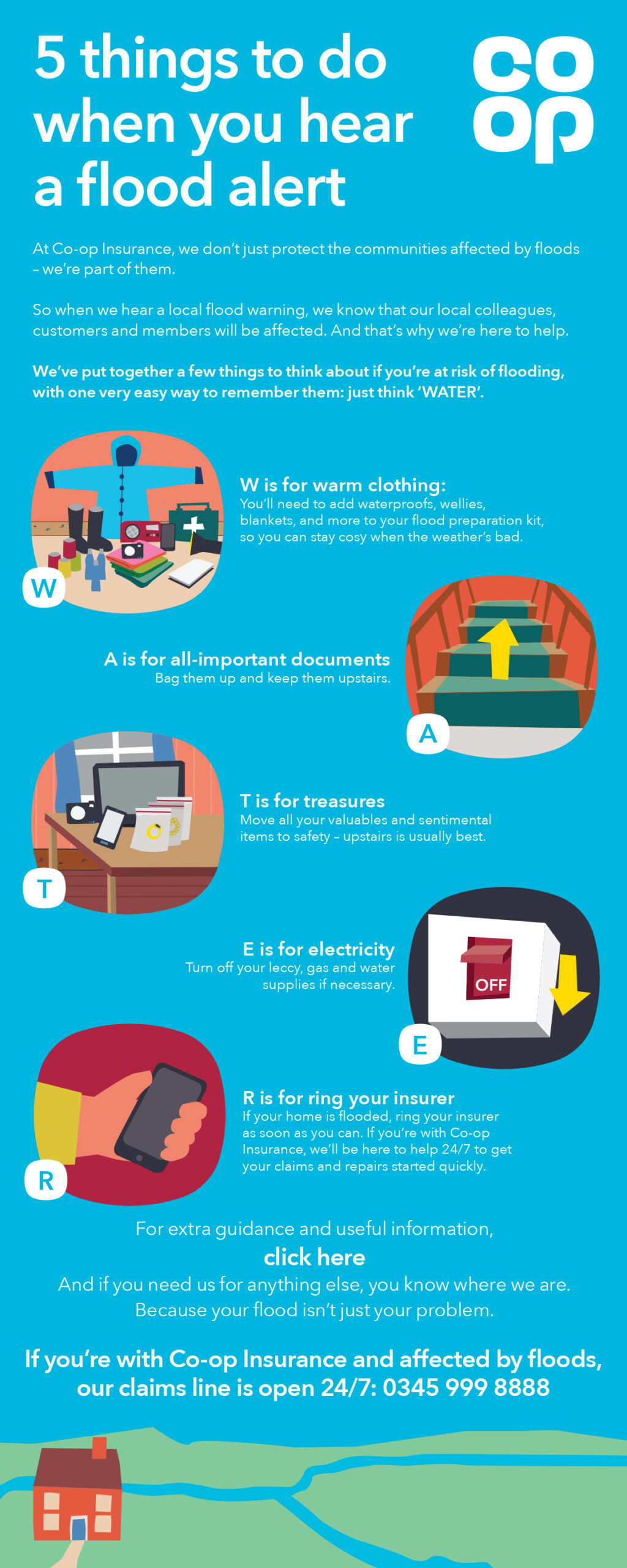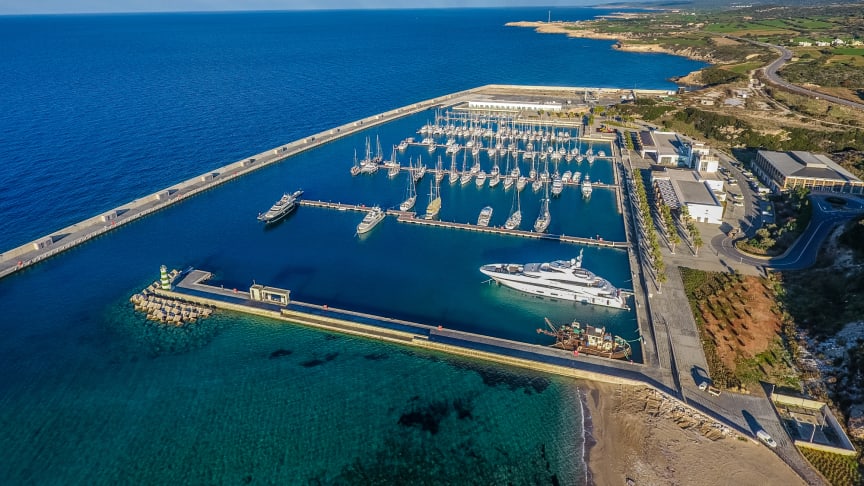[ad_1]
The UK weather over the last decade has proved to be very unpredictable with a number of freak weather occurrences causing householders property damage including storms, floods and burst pipes during extreme freezing conditions.
So, if you are unlucky to be in the path of the unstoppable Mother Nature, what should you do if your home is flooded? Here are some before, during and after tips to help you during a potentially very difficult time.
BEFORE:
If you are concerned about the threat of flooding to your home you need to make sure you have a flood plan in place to help you prevent damage to your home or in the event that a flood strikes, you need to be able to minimise damage and ensure the safety of your nearest and dearest and your most valuable possession.
Your flood plan checklist should include the following:-
- Have a list of important contacts to hand, agree on where everyone in the household should go and how you will stay in contact with each other
- Think about what you can move now – don’t wait until water is entering your property as it will most probably be too late. If you are close to flooding, move items of personal and sentimental value to a safe place.
- Prioritise other belongings if you have time – this can include ensuring electrical items and computer equipment is moved to safety and if you have time and it is safe to do so, move furniture upstairs if possible or the next best thing is to stack furniture as high of the ground as possible
- Think about who will need your help most if it becomes an emergency situation – especially young children, the elderly and even vulnerable neighbours but ensure that you consider your own safety at all times
- Locate your insurance details and check your policy cover
- Know how to turn off your utility supplies such as gas, electricity and water
- Prepare an emergency flood kit which might include a torch (with spare batteries), warm clothing (waterproof where possible), blankets, first aid supplies, bottled water and non perishable food items (including any supplies required for young babies and children)
- Monitor local weather warnings on the news and sites such as the environment agency
DURING:
If flooding is likely to be imminent, put your flood action plan into place ensuring:-
- Everyone’s safety is top priority
- Turn off electricity, gas, water etc
- Move valuables and home contents if safe to do so
- If you have a vehicle, move to higher ground if you have time before direct flooding
- Evacuate the property as soon as possible
- If anyone appears to be in any danger, alert the emergency services immediately
- Check in on vulnerable friends and neighbours and don’t forget about any pets
- STAY CALM
- If you are aware of any local evacuation centres, get yourself and your family there as soon as possible
Flood water is very contaminated and in large volumes, fast flowing water can be very dangerous so avoid driving or walking in it where possible and listen to the advice of emergency services at all times.
For an area that is badly affected, it is common for the local council to provide evacuation centres which will provide some temporary shelter for you and even your pets if these can be restrained or kept in a suitable pet box (don’t forget food for humans and pets if possible!)
AFTER:
- When you are advised that it is safe to return to your property, be aware of dangers that may be lurking near or in your home such as bacteria (try not to come into contact with directly flooded property), sharp or dislodged objects and various types of structural damage. It is not recommended that children or elderly are allowed to enter the property following flood damage.
- If you have not done so already, contact your Insurance company and notify your claim as soon as possible. During a flood situation, you are likely going to experience delays in getting through on the phone and it may take several weeks for a claims inspector or Loss Adjuster to attend due to high claims volumes.
- If you do not have insurance cover, you should make contact with your local council for advice on assistance that may be available.
- Do not initially attempt any major cleaning works and do not throw out any of your damaged belongings as these will need to be inspected when assessing your claim.
- Stay away from wet electrics and do not attempt to fix any structural damage yourself as this will need to be properly assessed.
Assistance of specialist restoration companies will normally be provided by your Insurer and they will deal with everything from cleaning, strip out of damaged fixtures and fittings, sanitising, drying (which can take several months) and if you have contents cover, they will also fully assess the damage to these, restore what possible and for anything that cannot be restored, they will list these on an inventory for you and dispose safely – this inventory will then assist you with preparing your claim.
Buildings and contents cover will meet the costs of alternative accommodation during the period when the property is not habitable for living purposes so you should liaise with your Insurer / Loss Adjuster as soon as possible to discuss possible options. This might include:
- Staying in a hotel on an emergency basis
- Staying with friends / family (you should request a financial allowance for this)
- Obtaining a short term rental property
A flood claim will generally go along the following lines:
- Notification of claim to Insurers
- Visit by Insurers appointed Loss Adjuster who will assess the damage and discuss alternative accommodation etc with you
- If no issues with your policy cover, it is reasonable for you to request an emergency interim payment to help you purchase emergency items – this payment can be offset at a later stage from any agreed settlement. Any alternative accommodation requirements will be assessed early on.
- Appointment of specialist restoration company to deal with cleaning, drying (buildings cover) and assessment and disposal of contents (contents cover)
- If the property was badly saturated, it may take several months to dry – a restoration company will then provide a drying certificate
- Prior to completion of drying, your repair estimates will be reviewed and authorised if in order or if you opt to use an Insurer approved Contractor, this will be authorised. If your claim is large in value (approx £20,000 or more), it is likely that a Surveyor will be involved in the process of obtaining tenders and overseeing repairs – these costs will be met by your Insurer.
- f you have contents cover, you will need to provide a full detailed list of items that damaged beyond repair; for larger value items (say over £300), you are likely going to have to provide original receipts / replacement estimates where possible
- When the property has been restored, your alternative accommodation will cease and you can move back home
During your insurance claim, you should keep a record of all activities including dates and times and if in any doubt at any stage, check with your Insurer / Loss Adjuster and do not proceed with anything until you are satisfied that they are going to pay for it.
Disputes can commonly arise with flood claims – these can be due to disputes over costs / values, policy cover understanding or you may experience unacceptable levels of service, especially during high claim volume situations. If you want your claim to go as smoothly as possible, you need to understand what your policy covers, how to deal with common disputes effectively and how to submit an effective complaint in the event that you are unfortunate enough to experience problems.
[ad_2]




